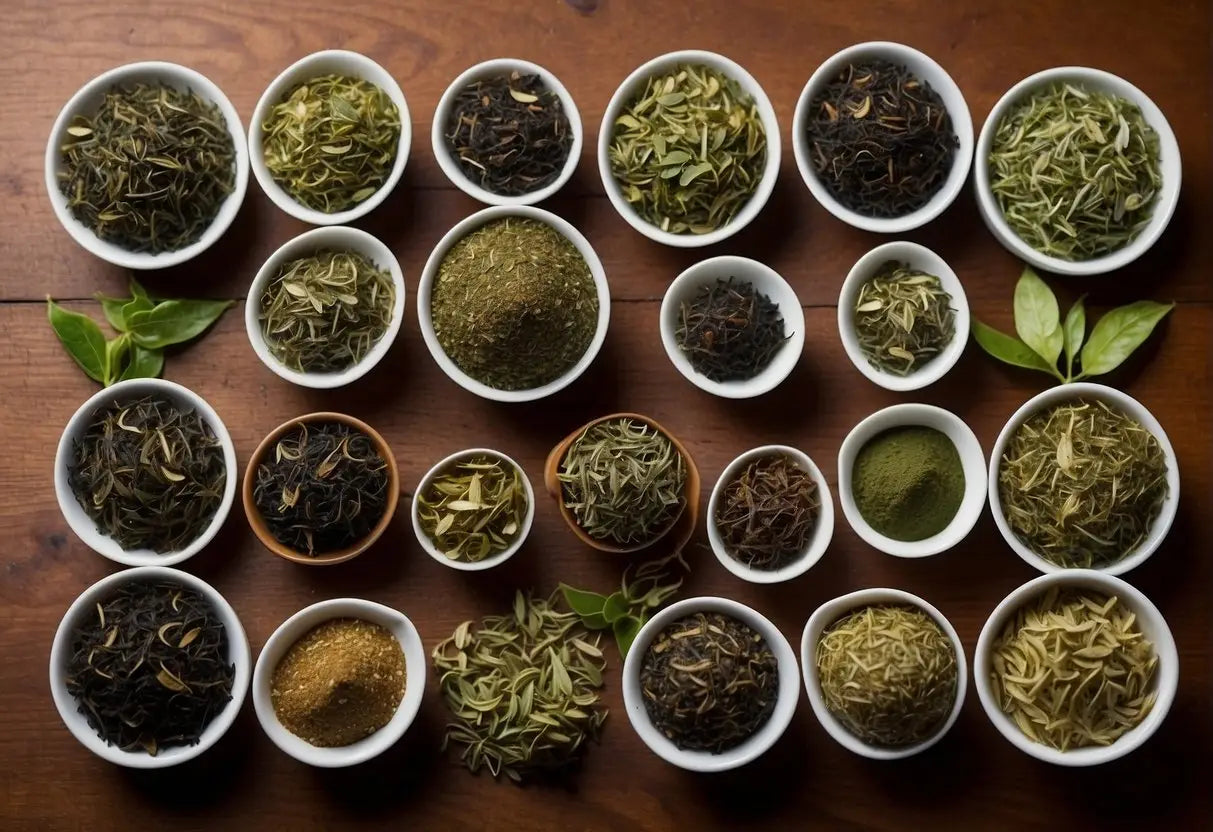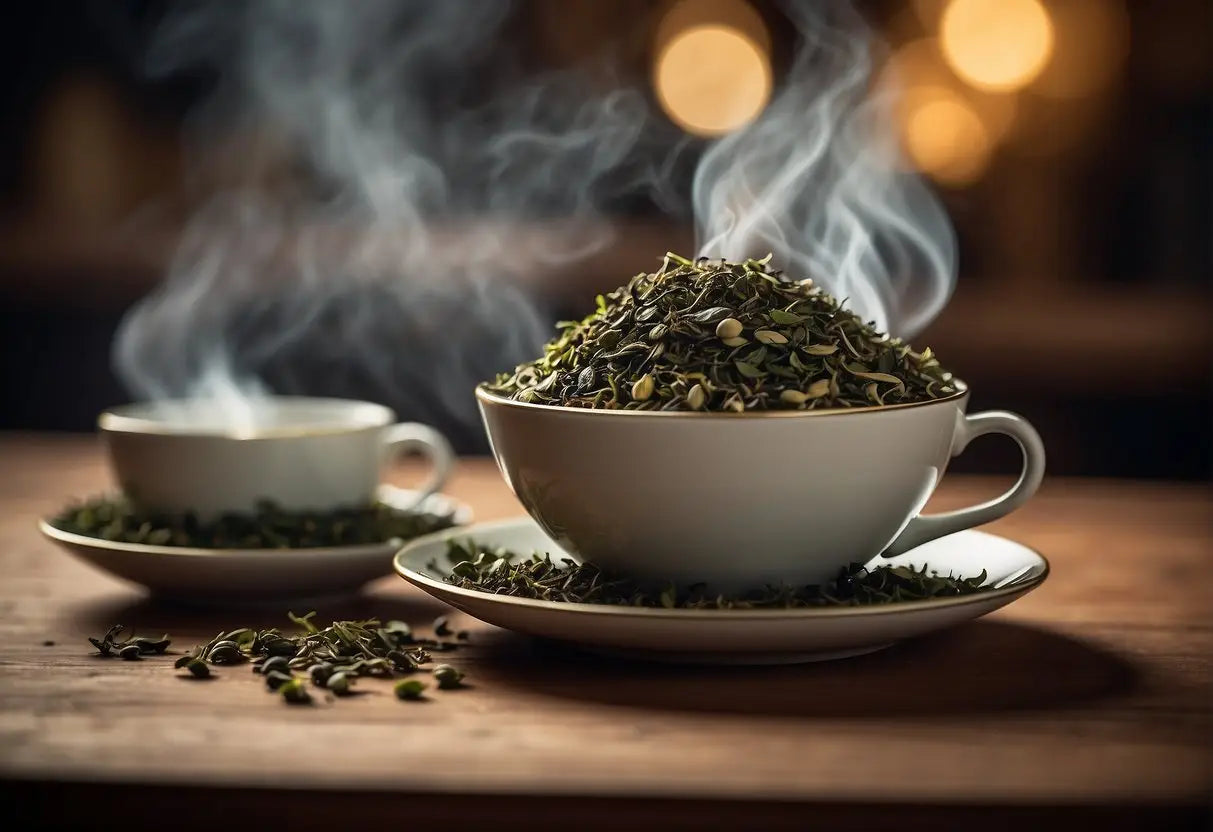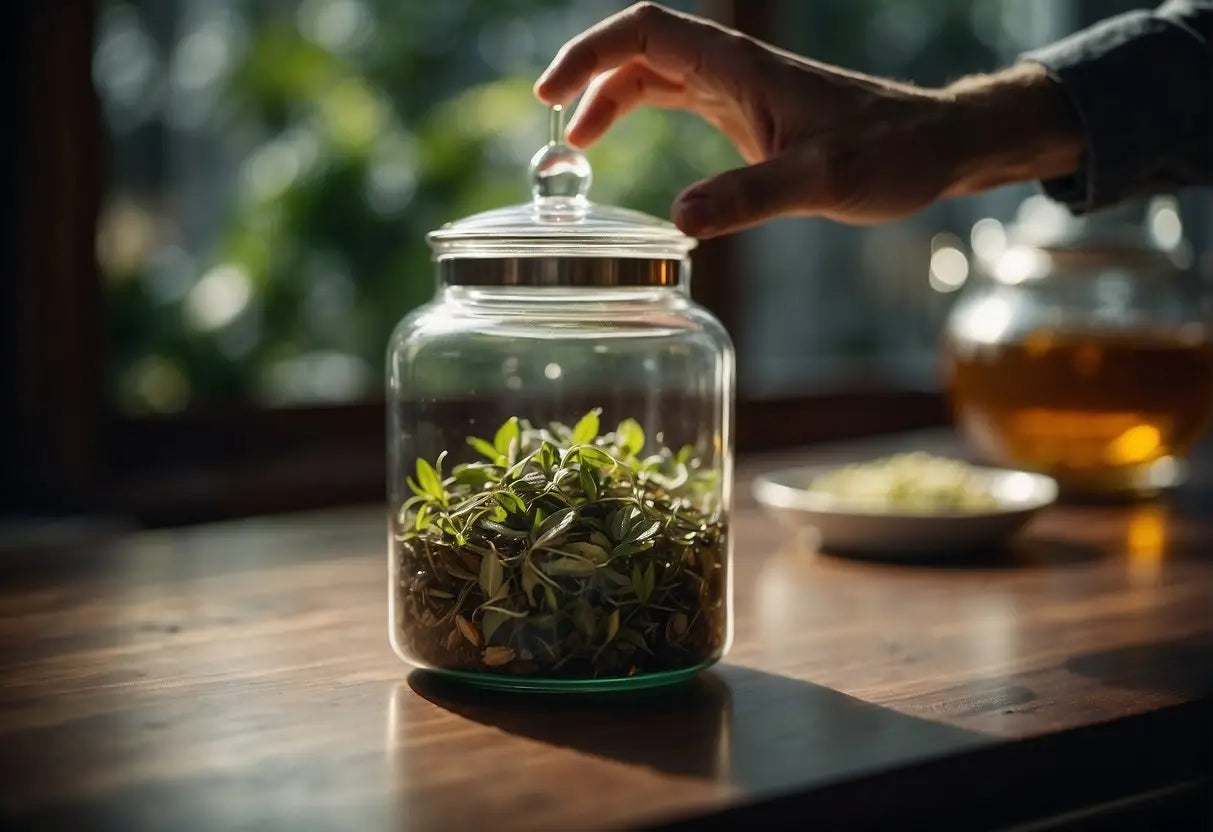Can You Eat Tea Leaves
Tea leaves, primarily from the plant Camellia sinensis, are fully edible and have been consumed in various forms throughout history. When you drink a cup of tea, you're already ingesting the water-soluble components that seep from the leaves.
Fresh Leaves: You can eat fresh tea leaves in salads or use them as an herb in cooking. They possess a mild flavor and contain antioxidants known as catechins.
Processed Leaves: Traditional teabags or loose-leaf teas contain processed leaves. These are typically rolled and dried, concentrating their flavor and nutrients. You may find these leaves slightly bitter if eaten due to the presence of tannins.
Bestsellers
Matcha: This is a form of powdered green tea leaves that you consume whole when mixed into liquids. It's a common way to ingest complete tea leaves and take advantage of their health benefits.
Health Considerations: Eating tea leaves can offer you dietary fiber and nutrients; however, they can also contain caffeine and heavy metals accumulated from the soil, so moderation is important.
| Form | Description | Considerations |
|---|---|---|
| Fresh | Mild flavor, used in salads and cooking | High in antioxidants |
| Processed | Used in teas, has a concentrated flavor | Contains tannins, can be bitter |
| Matcha | Powdered form, mixed into drinks | Full ingestion of leaves, high in nutrients |
Remember, the texture of tea leaves might be unappealing to some, and the flavor can vary widely depending on the type and processing method. If you choose to incorporate tea leaves into your diet, it's advisable to start with small quantities to see how your body reacts.
Nutritional Benefits
When you consider consuming tea leaves, you're looking at a rich source of beneficial nutrients. Your body can gain a notable boost from the vitamins, minerals, and antioxidants present in tea leaves.
Vitamins and Minerals:
- Vitamin C: Supports your immune system.
- Vitamin K: Essential for blood clotting.
- Calcium: Key for bone health.
- Potassium: Regulates blood pressure.
Antioxidants: Tea leaves contain polyphenols such as catechins and theaflavins. These compounds help protect your cells from damage and may reduce the risk of chronic diseases.
Amino Acids:
- L-theanine: An amino acid that promotes relaxation without drowsiness.
Here's a succinct look at the nutrient content of Camellia sinensis (common tea plant) leaves:
| Nutrient | Benefit |
|---|---|
| Catechins | Antioxidant activity |
| Theaflavins | Support heart health |
| Caffeine | Temporary mental alertness |
| Fiber | Aids digestion |
Ingesting tea leaves could nourish your body with a diverse spectrum of nutrients. However, moderation is key, as consuming large quantities might introduce too much caffeine or other compounds not typically consumed in high amounts.
Types of Tea Leaves for Consumption

When considering incorporating tea leaves into your diet, knowing the specific types suitable for consumption is key. Each variety offers a distinct flavor profile and potential health benefits.
Green Tea Leaves
You can consume green tea leaves, which are known for their high levels of antioxidants. They are minimally processed, preserving the natural compounds. Among the most popular are Sencha and Matcha, which can be brewed or even directly ingested in powder form.
Lao Ban Zhang
Black Tea Leaves
Black tea leaves undergo a full oxidation process, leading to their dark color and robust flavor. Popular types include Assam and Darjeeling; these can be stewed into a potent extract, or ground finely for culinary applications.
White Tea Leaves
White tea leaves are the least processed, retaining a high level of antioxidants and a delicate flavor. Silver Needle and White Peony are subtle in taste, suitable for gentle infusions or adding to light dishes.
Oolong Tea Leaves
Lastly, Oolong tea leaves are partially oxidized, striking a balance between green and black teas. Varieties like Tieguanyin present a unique flavor and can be enjoyed steeped or added to recipes, providing a nuanced taste.
Preparation Methods

Tea leaves, versatile in their use, can be consumed in various ways depending on your preference for flavor and texture. Here are some specific methods to prepare tea leaves for consumption.
Brewing
To extract the full flavor of tea leaves, brewing is the most common method. You can follow these steps:
- Heat water to the appropriate temperature. Different teas require different temperatures.
- Place the tea leaves in a teapot or infuser.
- Pour the hot water over the leaves and steep for the recommended time.
- Strain the leaves and serve the tea.
Note: Over-steeping can lead to a bitter flavor.
Cooking with Tea Leaves
Tea leaves can add a unique flavor to your dishes. For cooking:
- Matcha: High-quality matcha can be whisked into pastries or dough for a subtle tea flavor.
- Infused oils: Use dry tea leaves to infuse oil by heating the leaves with your choice of oil, then strain before use.
Here's an example with Marinated Foods:
| Ingredients | Instructions |
|---|---|
| Dry tea leaves | Use them as a spice rub or blend them into marinades for proteins. |
Eating Raw
Consuming raw tea leaves can give you a direct experience of their flavor profile and potential health benefits, such as antioxidants. However, they can be quite bitter and fibrous. If you choose to eat them raw:
- Tender Leaves: Select young, tender leaves to minimize bitterness.
- Salad Mix: Chop them finely and sprinkle into salads for an earthy accent.
Health Considerations

When considering the consumption of tea leaves, be aware of their caffeine content, the presence of antioxidants and polyphenols, and the potential for side effects.
Caffeine Content
Tea leaves contain caffeine, a stimulant that can have varying effects on your body. The amount of caffeine in tea leaves can vary, but generally, it ranges from:
- Green tea: 24–45 mg per 8 oz cup
- Black tea: 14–70 mg per 8 oz cup
- Oolong tea: 12–55 mg per 8 oz cup
Excessive intake of caffeine may lead to:
- Insomnia
- Nervousness
- Restlessness
- Stomach irritation
- Increased heart rate
Antioxidants and Polyphenols
Tea leaves are rich in antioxidants and polyphenols such as catechins and theaflavins. These compounds are beneficial as they:
- Combat oxidative stress
- May reduce the risk of chronic diseases
Regular consumption in moderate amounts can contribute to your overall antioxidant intake. However, high doses might lead to liver toxicity, especially when consuming concentrated supplements.
Possible Side Effects
While tea leaves are generally safe, some individuals may experience side effects such as:
- Allergic reactions
- Digestive issues when consumed in large amounts
- Interference with certain medications, particularly when tea leaves are consumed in concentrated forms such as extracts
It's important to consult with a healthcare provider if you have concerns about allergies or interactions with medications. Moderation is key to avoiding negative side effects.
Cultural Practices

In Japan, Matcha is finely ground powder of specially grown and processed green tea leaves. Traditionally, it is consumed during the Japanese tea ceremony, which is a cultural activity involving the ceremonial preparation and presentation of matcha. You take part in a practice that dates back to the 9th century.
In Myanmar, Laphet, also known as pickled tea leaves, is a traditional delicacy. You may find it served as laphet thoke, a salad mixed with various ingredients such as cabbage, tomatoes, and nuts. Eating tea leaves in this form is an integral part of Burmese culture.
China has one of the oldest tea cultures, with Pu-erh tea being a notable example. The leaves of this fermented tea are often pressed into cakes and can be consumed after steeping or even eaten as a snack, offering you a different way to enjoy tea leaves.
Key Points:
- Matcha in Japan: Consumed in a ceremonial manner.
- Laphet in Myanmar: Eaten as a pickled tea leaf salad.
- Pu-erh in China: Tea leaves pressed into cakes, steeped or eaten directly.
Purchasing and Storage

When buying and storing tea leaves, it's important to focus on quality and preservation to enjoy the best flavor and aroma.
Buying Quality Tea Leaves
Check for Freshness: Fresh tea leaves should have a strong, pleasant aroma and a vibrant color. Avoid any that appear dull or have a stale smell.
Source: Purchase from reputable suppliers who can provide information on the origin, type, and harvest date. This transparency typically indicates higher quality.
Storing Tea Leaves
Containers: Use airtight containers to protect tea leaves from moisture, light, and odors. Glass jars with tight seals or specialized tea caddies work well.
Environment: Store your tea in a cool, dark place. Avoid areas with temperature fluctuations such as near ovens or stoves, as this could degrade quality.
← Older post Newer post →











